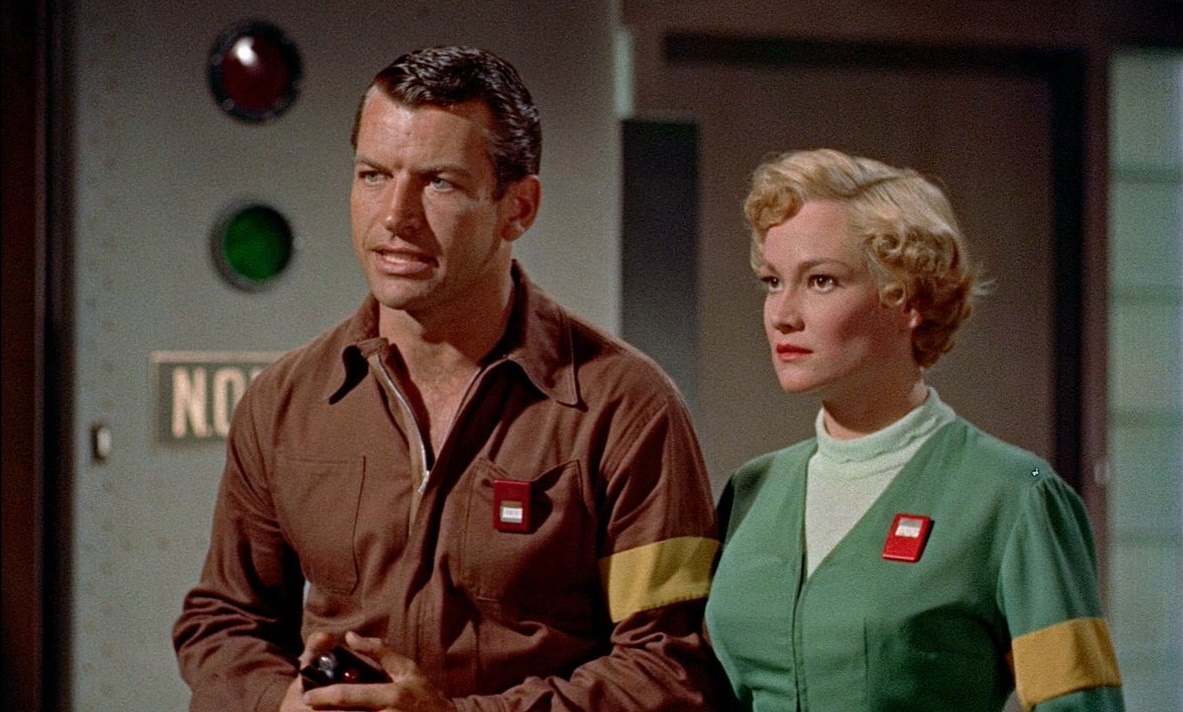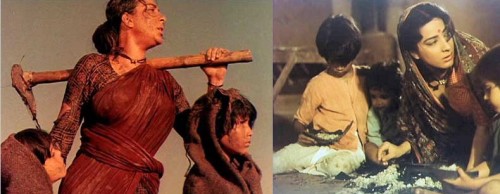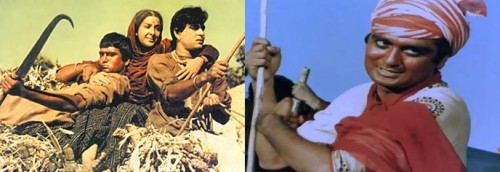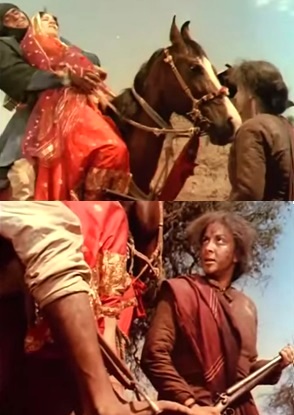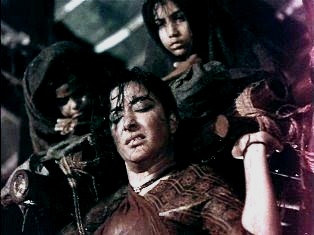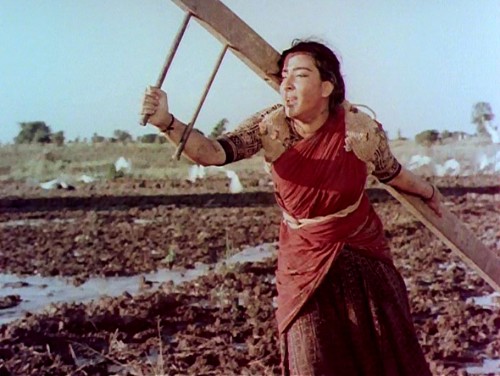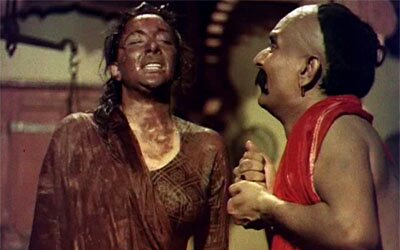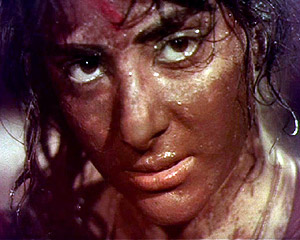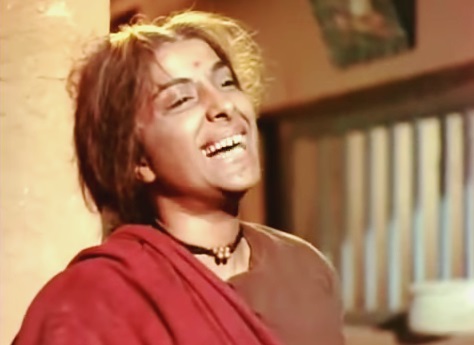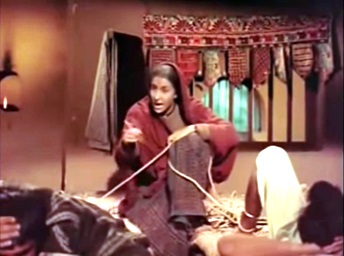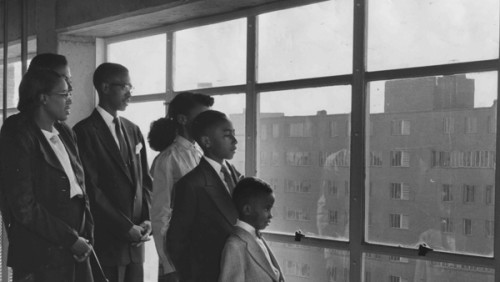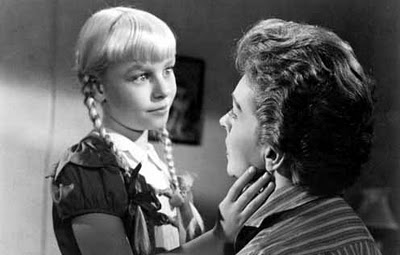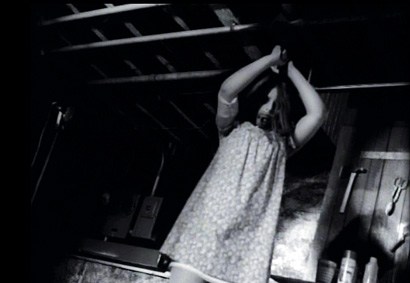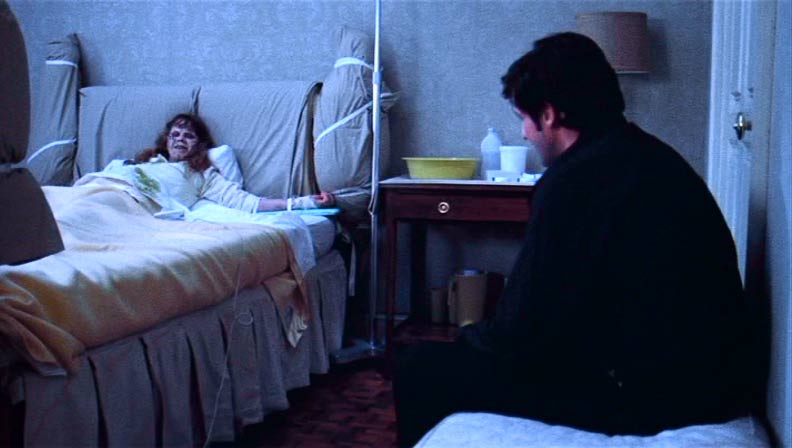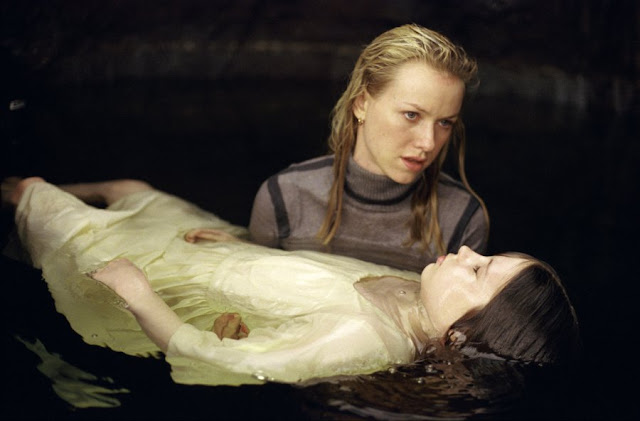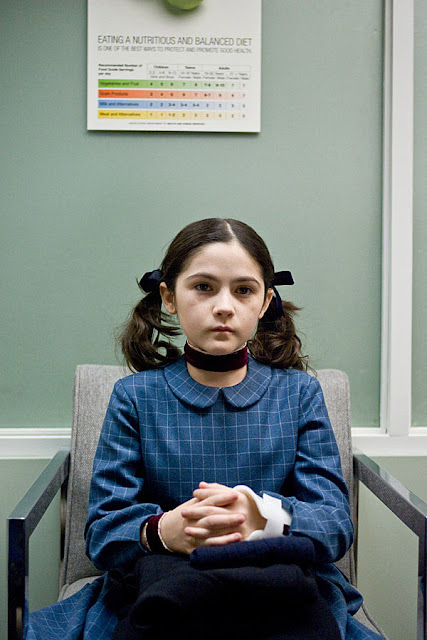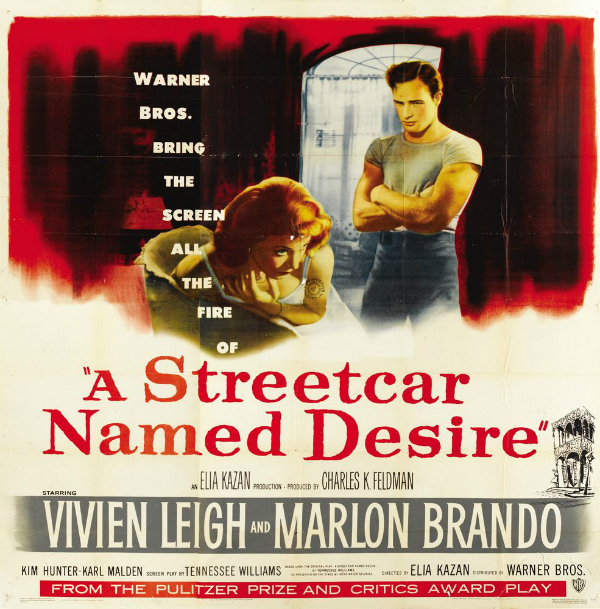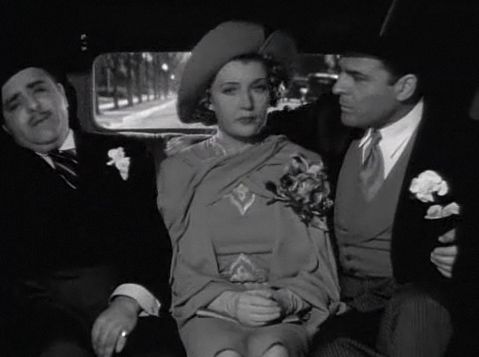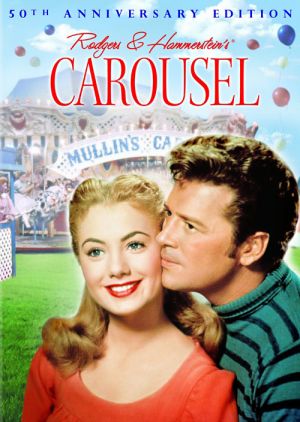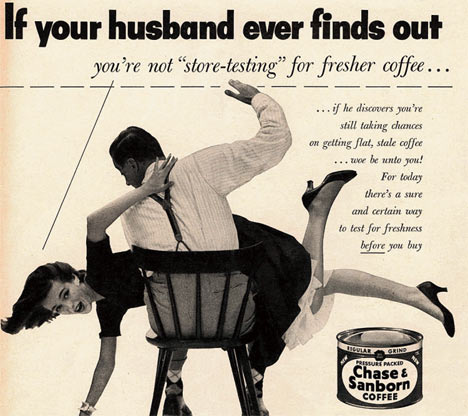This guest post written by Linda Levitt appears as part of our theme week on Women Scientists.
A study published by the University of Denver in 2012 shows that less than one third of women completing degrees in STEM fields end up pursuing careers in the disciplines they studied. In fact, one in three women leaves the technology workforce within the first two years. Since the number of women pursuing and succeeding in careers as scientists remains quite small, it is surprising to find a particular characterization of women as scientists in 1950s science fiction B-movies. The abundance of female scientists in these films does not reflect the reality of women in the sciences at the time. We could argue that including female scientists enhances the moviegoing experience by creating “eye candy” for male audience members. If the moviegoer identifies with the heroic male lead, as film theorist Laura Mulvey and others would assume, then the film’s satisfying conclusion includes winning the heart of the “leading lady” and enabling the “happily ever after” for the heroic male scientist who saves civilization from deadly creatures, nuclear meltdown, or another apocalyptic scenario.
Science fiction routinely offers an alternative present or a possible future: some of these realities are promising, and some are apocalyptic. The possibility of gender equality in the workplace is not far-fetched for an alternative reality, especially in light of a long history of women working quietly in the background in the sciences. Thus another perspective would be to argue that the inclusion of female scientists in B-movies allowed young women in the audience to see the possibility for an intellectual career for themselves.
In the decades since these films first played in theaters and drive-ins, it has become relatively commonplace for women to have fulfilling careers, although gender equality remains a daunting challenge across all professions. The recent proliferation of discussions about “work-life balance” indicates this inequality: the need to find a balance between professional and personal lives is addressed almost exclusively to women. While the happily ever after scenario in these 1950s B-movies comes with an expectation that women give up their careers in science to become wives and mothers once the appropriate suitor is identified, it seems there are women in B-movies who do have it all — they maintain the respect afforded to them as scientists and also win romantic partners, without having to sacrifice their professional interests to assume domestic roles instead.
Women scientists featured in 1950s B-movies span a broad variety of expertise: paleontologist Lee Hunter in The Beast from 20,000 Fathoms (1953), Dr. Patricia Medford, an etymologist in Them! (1954), biologist Stephanie Clayton in Tarantula (1955), and three scientists — Joanna Merritt, Marna Roberts, and Madame Elzevir (truly, she was not afforded a first name), wife of the esteemed Dr. Pierre Elzevir — in Gog (1954). These women often have the answers to save civilization, or willingly brave deadly encounters with the unknown, but many of the depictions of female scientists also reify gender stereotypes about women, regardless of their intellectual prowess and independence.
The 1954 Cold War sci-fi thriller Gog offers several good examples. A feminist critique would address some of the blatantly sexist events, such as the research assistant who weeps hysterically when the scientist she works with dies suddenly, only to be slapped across the face by another male scientist who implores her to “get some men up here and restore order.” Just the same, three women scientists are at work in this underground laboratory where a space station is being built. One of the scientists, Joanna Merritt (Constance Dowling), is portrayed as serious, intellectual, and devoid of much emotion. She does, however, have a quick wit.
Merritt and Dr. Van Ness (Herbert Marshall), the lab supervisor, take security agent David Sheppard (Richard Egan) on a tour of the facility. They observe an experiment in weightlessness, where a man and woman are training for a zero-gravity environment in space. After watching them for awhile, Sheppard asks: “Why the girl?” Merritt replies: “We think women are better suited for space travel than men.” Lest she have the opportunity to make an argument favoring women over men, Van Ness quickly adds, “For one thing, they take up less space in a rocket.”
Sheppard objectifies the female astronaut in training, referring to her as “the girl” and questioning the appropriateness of her place in the space program. Then Van Ness adds that women are better because they are smaller, providing an idealized stereotype of the petite, fit woman. Nonetheless, there is still an opportunity for Merritt to offer what rhetorically sounds like a scientific truth: “We think women are better suited for space travel than men.” She has a strong and present personality, and the perspective she voices is not easily dismissed. Spoiler alert: There have already been hints that David Sheppard and Joanna Merritt are… well… romantically acquainted, and by film’s end, they appear destined for the happily ever after. Still, her position as a scientist of regard does not seem diminished. The presence of women in positions of intellectual power seems tacitly accepted here, in a filmic world where imagination is boundless.
Merritt has no internal conflict — she is not concerned about making choices about her life. Yet the taken-for-granted nature of female scientists in these films differs markedly from recent films: for characters like Dr. Ellie Sattler in Jurassic Park (1993) or Dr. Eleanor Alloway in Contact (1997), their choice of careers leads others to question their scientific authority and personal motivation.
Women’s studies scholar J. Kasi Jackson points out that “in addition to negotiating between detachment and empathy, the female scientist must balance professionalism with femininity.” The woman scientist is an outsider both in science, where her “feminine” empathy is not objective, and in society, where scientific rationality conflicts with assumed “feminine” traits. Jackson’s observations relate well to Lee Hunter (Paula Raymond), a paleontologist in the 1953 giant creature movie The Beast from 20,000 Fathoms. Hunter is a social outcast: as a woman, she doesn’t comfortably fit in with her male colleagues, nor does she seem to connect with any other women. She is, in fact the only woman with any substance in the film, and no one doubts her place on the scene or the veracity of her research and observations. The other female characters are empty stereotypes: a nurse, a nun, a telephone operator, a screaming mother, and a bank of phone operators handling calls in the monster-created emergency. The Beast from 20,000 Fathoms fails the Bechdel Test, since it does not have: (1) at least two women in it, who (2) talk to each other, about (3) something other than a man.
Although it is unlikely that a 1950s science fiction B-movie would pass the Bechdel Test, it is employed here to draw attention to the strength of the female scientist in this film. Like Joanna Merritt, Lee Hunter is poised, confident, and smart. She is the assistant to Dr. Thurgood Elson (Cecil Kellaway), who is visited by a physicist named Thomas Nesbitt (Paul Hubschmid), who believes he has seen a dinosaur. No one takes Nesbitt very seriously, but Hunter does. She establishes both her scientific prowess and her compassion after Nesbitt leaves Elson’s laboratory. Of Nesbitt, she tells Elson, “When he first came to this country, I attended his lectures on the curative properties of radioactive isotopes. He’s a brilliant man. Isn’t his story in any way feasible?” Despite Elson’s refusal, Hunter decided to visit Nesbitt’s office to offer her support.
Nesbitt’s secretary informs him of Lee’s arrival: “There’s a Lee Hunter waiting for you. She’s very pretty.” In this moment, the narrative privileges Lee’s femininity and sexuality over her intellect. Yet when Nesbitt later asks why she would believe his claims, she says, “I have a deep abiding faith in the work of scientists. Otherwise I wouldn’t be one myself.” Hunter ties her identity to science, a theme which is repeated throughout the film.
Science fiction B-movies from the 1950s are rife with female characters who do not have the independence or determination of Joanna Merritt and Lee Hunter. Some female characters are primarily sexualized and seductive, where others are hyper-emotional and present themselves as weak and needy. Despite the depiction of some women scientists, these films still reflect the gendered reality of their time: the cultural framework in which these films are set is undeniably sexist. Teresa De Lauretis argued that female characters are made to conform to the ideal image that the male protagonist has for them. Regardless of their intellect or achievements, these characters are the object of the male gaze.
Writing in 1971, political scientist Jo Freeman argued that one of the core concepts of sexism is that “women are here for the pleasure and assistance of men.” Freeman goes on to say that:
“It is this attitude which stigmatizes those women who do not marry or who do not devote their primary energies to the care of men and their children. Association with a man is the basic criterion for participation by women in this society and one who does not seek her identity through a man is a threat to the social values.”
Identity formation is a complex process, and every person forms and performs their identity in the context of their interpersonal relationships. In other words, self-identity reflects, but is not dependent upon, the presence of others. Freeman’s claim, then, has validity, especially when viewed with contingency. For women scientists in the 1950s, “association with a man” was “the basic criterion for participation by women” in society: science has been and remains patriarchal. As previously noted, women tend to abandon or simply not pursue professional life in the sciences; the lack of a welcoming, balanced space for women is one reason. With this in mind, it is noteworthy that B-movie women scientists seem undaunted by the patriarchal cultures in which they choose to work.
Although men significantly outnumber women in the B-movies discussed here, women were frequently featured in significant scientific roles, battling aliens, mutant forces, or giant bugs. A survey of these films indicates a spectrum of reception in which female scientists may be welcome or othered, depending on their circumstances and relationships to men within the patriarchal culture of a scientific organization.
Linda Levitt’s research focuses on gender studies, media, and cultural memory. Her work is often situated at the intersection of these ideas.
